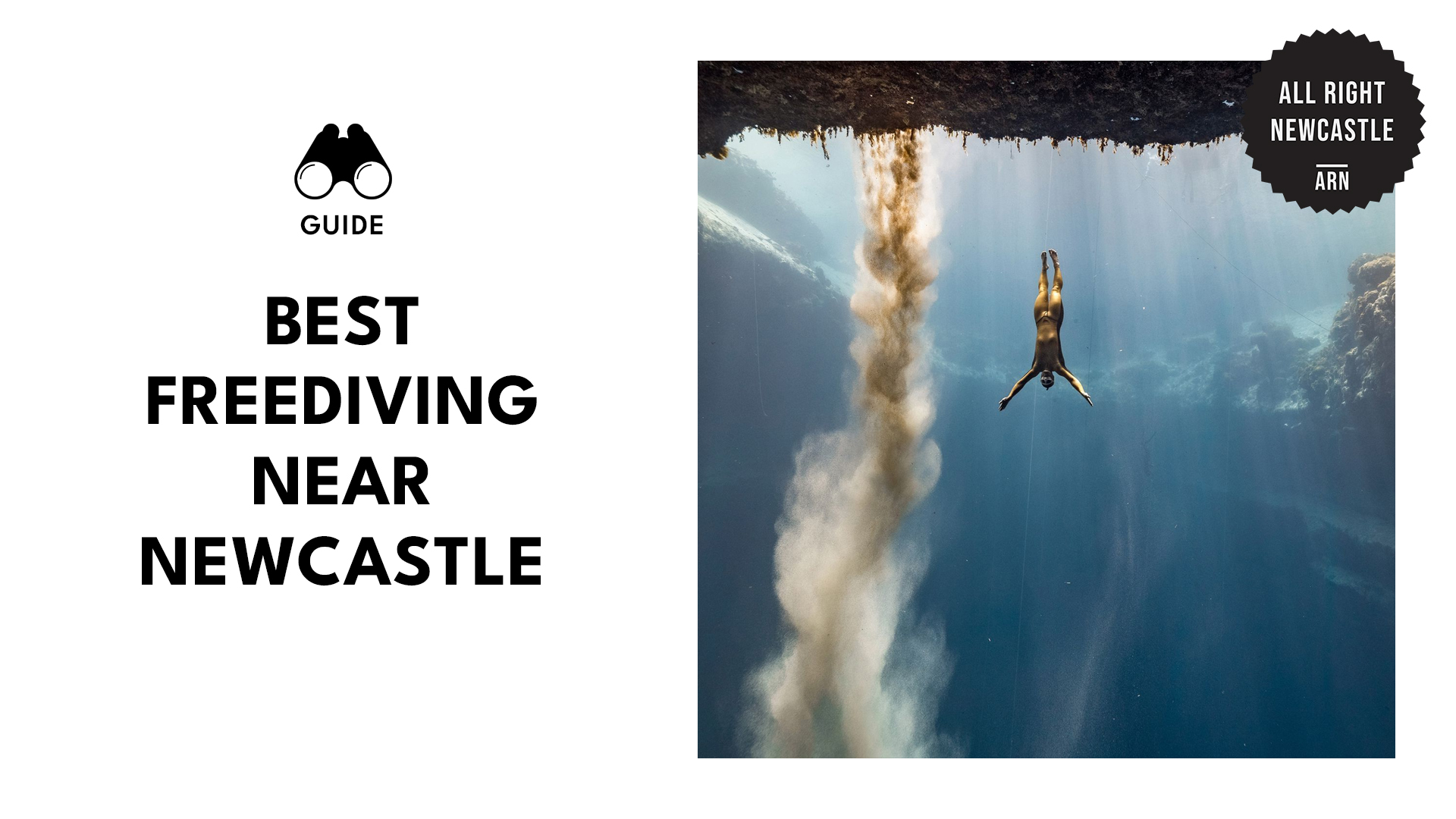Experience the best freediving near Newcastle at these 5 spots
There’s more to Newcastle than its iconic bridges, public pubs, and the buzz of the Quayside. It also happens to be close to some incredible freediving spots.
In fact, I’ve spent years exploring these waters. And while you won’t find freediving sites in Newcastle itself, a short drive takes you to kelp forests, rocky reefs, and marine life-rich dive sites.
So, whether you’re a beginner or looking for a challenge, there’s a site that fits the bill. But where exactly should you dive? Luckily, I’ve compiled a list of the best freediving locations near Newcastle that you can check—all with free entrance.
1. The Black Middens
Media credit: shantanamo
Address: Black Middens Rocks, North Shields NE30 1JE
Best Diving Times: Accessible year-round (only at low tide)
Just 15 minutes from Newcastle, The Black Middens sits where the River Tyne meets the North Sea. This offers a more challenging dive than the sheltered waters closer to the city.
With depths between 6 and 15 metres, this spot is best for experienced freedivers due to strong currents and shifting visibility. Also, boat traffic is frequent, so a surface marker buoy is essential.
The seabed has remnants of old shipwrecks, giving a glimpse into the area’s history. You’ll also find crabs, fish, and occasional surges of seawater rushing through the rocky terrain.
Access is from King Edward’s Bay, with free parking nearby. No permits are required, and access to the waters is also free. But, given how quickly conditions can change in this area, it’s best to check the forecast before heading out.
Pro tip:
The wreckage here isn’t just underwater. If you arrive at low tide, walk along the shore towards Collingwood Monument, and you’ll spot the remains of a 19th-century steamship embedded in the rocks.
2. Cullercoats Bay
Media credit: kimzotdf13
Address: Cullercoats Bay, Cullercoats NE30 4PZ
Best Diving Times: Accessible year-round (just after high or low tide)
Cullercoats Bay is one of my favourites on this list because it provides a more beginner-friendly diving spot. This sheltered bay by two piers offers calmer waters, with depths of only 3 to 10 metres—yes, that’s already ideal for building confidence.
The entry is also easy, with walk-in access from the sandy beach. Also, there are pay-and-display parking options nearby for convenience.
Once underwater, you’ll see seaweed beds, small fish, crabs, and various marine life. While conditions can change with the tide, visibility is generally better than most exposed sites.
Besides freediving, you can also enjoy various activities in the area, like coastal walks and sightseeing historic fishing cottages—plus, all of these are free, so make the best out of your visit.
Pro tip:
There’s a hidden cave system on the north side of the bay that you can explore at low tide before you dive. Inside, you’ll see old carvings from smugglers and fishermen who used the caves for storage.
3. St. Mary’s Island
Media credit: n.o.w_photography
Address: St. Mary’s Island, Whitley Bay NE26 4RS
Best Diving Times: Accessible year-round (just after high or low tide)
A 25-minute drive from Newcastle takes you to St. Mary’s Island, one of the region’s most scenic freediving spots. It’s well-suited for intermediate divers due to its 5 to 10 metres depths.
The highlight here is the resident grey seal colony, which I greatly enjoyed during our visit. You can see wrasse, blennies, and seasonal jellyfish—you name it.
And since St. Mary’s Island’s diving spot is like an underwater adventure park with rocky reefs and winding gullies, locals suggest always diving with a friend or two—or a diving expert, I must say.
Pro tip:
Check the rock pools along the causeway at low tide for fossilised corals dating back 300 million years. Look for circular or honeycomb patterns, but remember to leave them undisturbed.
4. Seaton Sluice
Media credit: missimber
Address: Seaton Sluice, Whitley Bay NE26 4RD
Best Diving Times: Accessible year-round (1 hour after high tide or 1 hour after low tide)
Seato Sluice has varied terrain with depths between 3 and 8 metres, featuring both sandy and rocky seabeds. However, since this area isn’t well-sheltered by natural barriers like cliffs or coves, it’s more affected by changes in weather and sea conditions.
Its rough waters and fluctuating visibility make diving challenging, especially after storms. Plus, boat traffic is occasional in this area, so bringing surface markers for safety is recommended.
Despite being just a 25-minute drive from Newcastle, this spot feels more remote. It helps attract marine life, such as crabs, lobsters, and small fish.
Pro tip:
The best entry is from the southern end of the bay near the small pier. This avoids the worst of the shifting sandbanks, which can make walking in with gear tricky.
5. Bamburgh Beach
Media credit: deanowilk
Address: Bamburgh Beach, Bamburgh NE69 7DF, UK
Best Diving Times: Accessible year-round (low wind speeds (<10 knots)
Bamburgh Beach isn’t just known for its iconic castle views; it’s also a rewarding, freediving spot. With depths ranging from 3 to 10 metres, the site features a mix of sandy and rocky outcrop where you’re likely to spot crabs, small fish, and even the occasional grey seal.
Visibility is generally good, but strong rip currents near the sandbanks can appear, so checking conditions before diving is essential.
After your dive, the beach invites you to linger a little longer. I like taking a stroll along the shore with Bamburgh Castle towering above. Aside from that, I suggest you head to Stag Rock for another dive with rocky formations and diverse marine life.
For a more relaxed break, consider grabbing a coffee at a nearby cafe or visiting the RNLI Grace Darling Museum to learn more about the area’s rich maritime history.
Pro tip:
Rip currents near the sandbanks can form without warning. If caught in one, aim for the gaps between rocky outcrops where the current is weakest.


